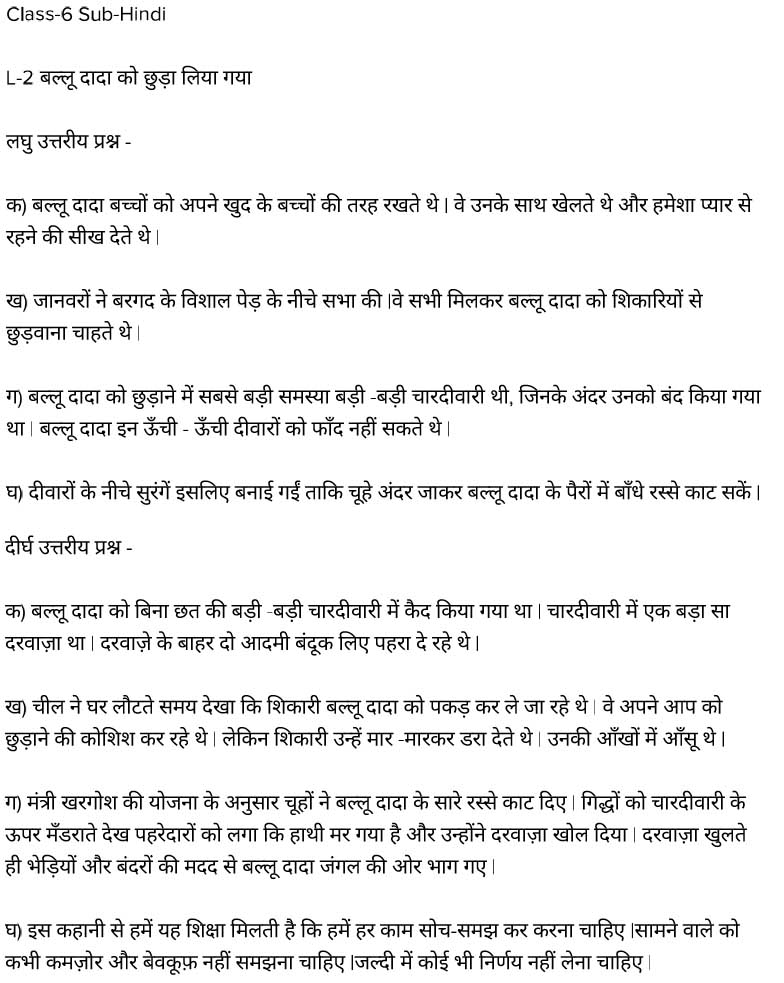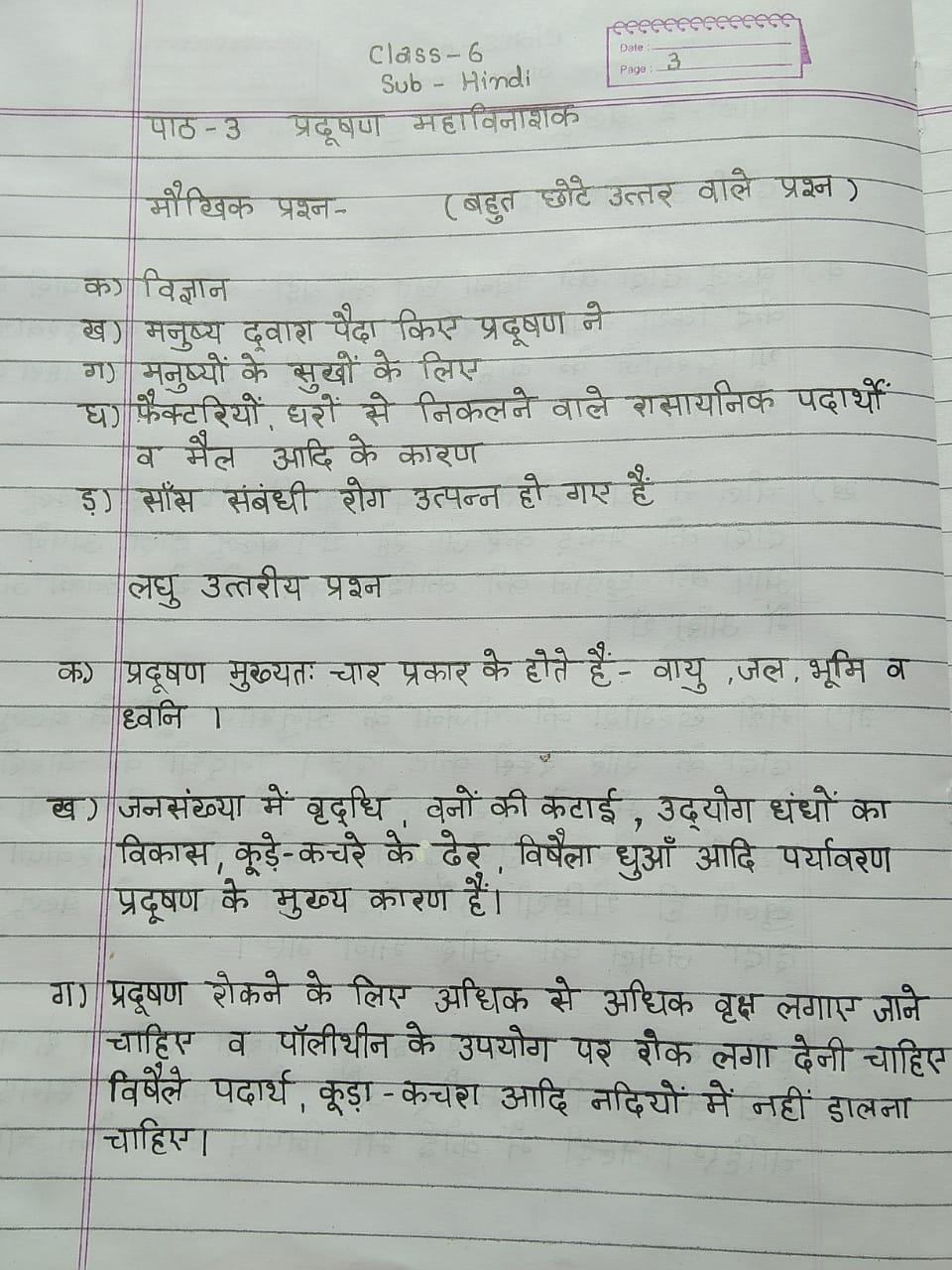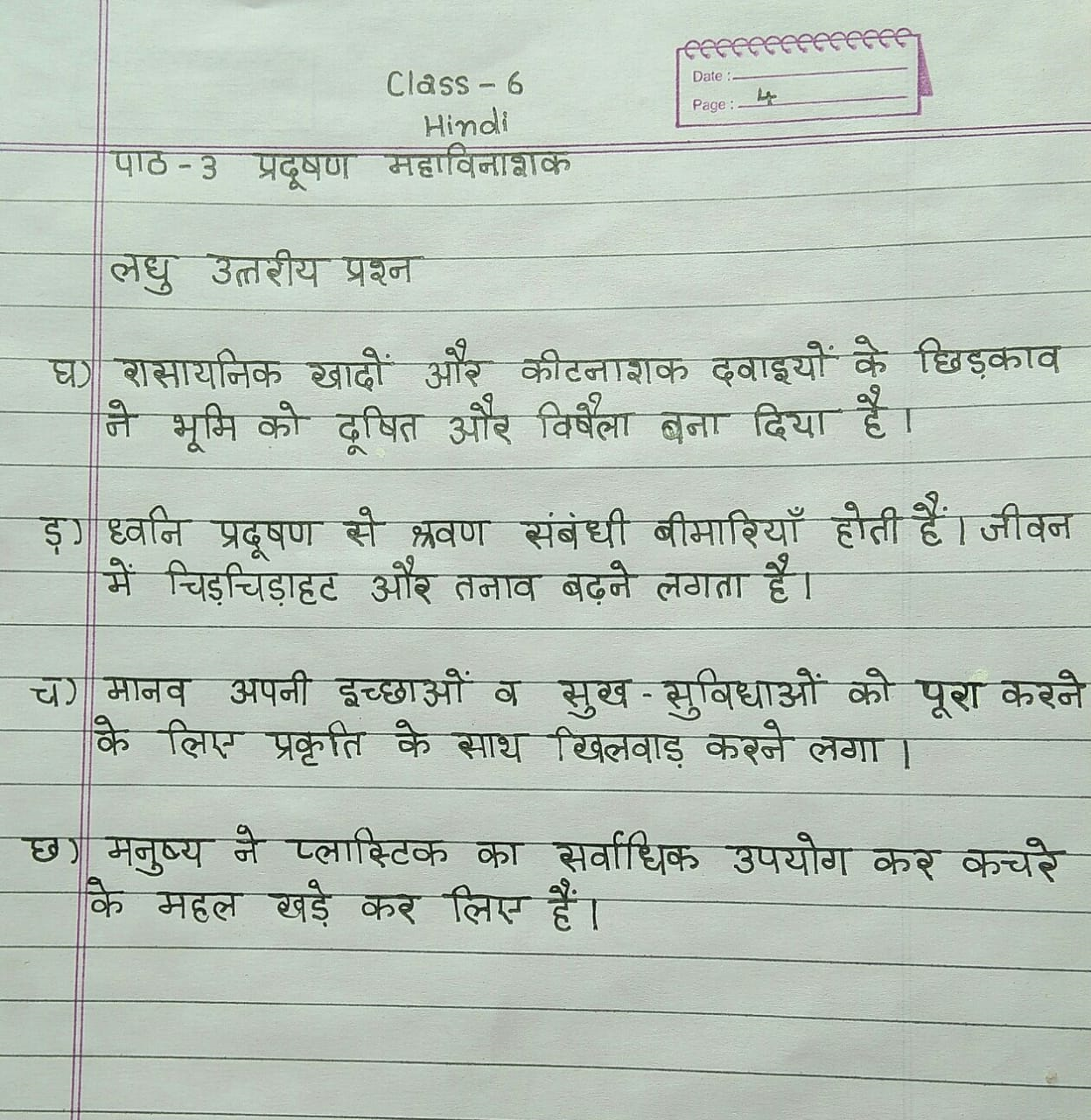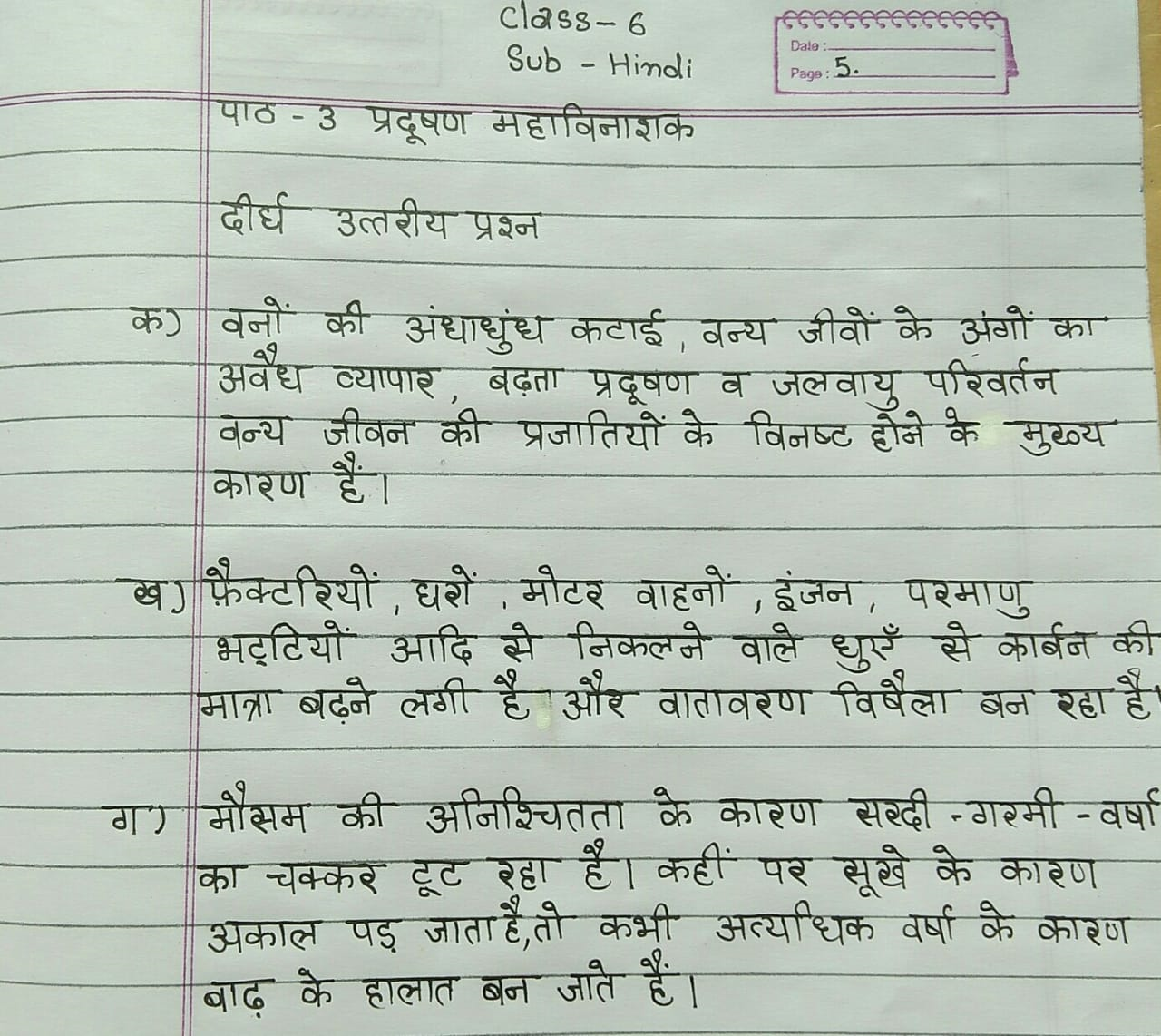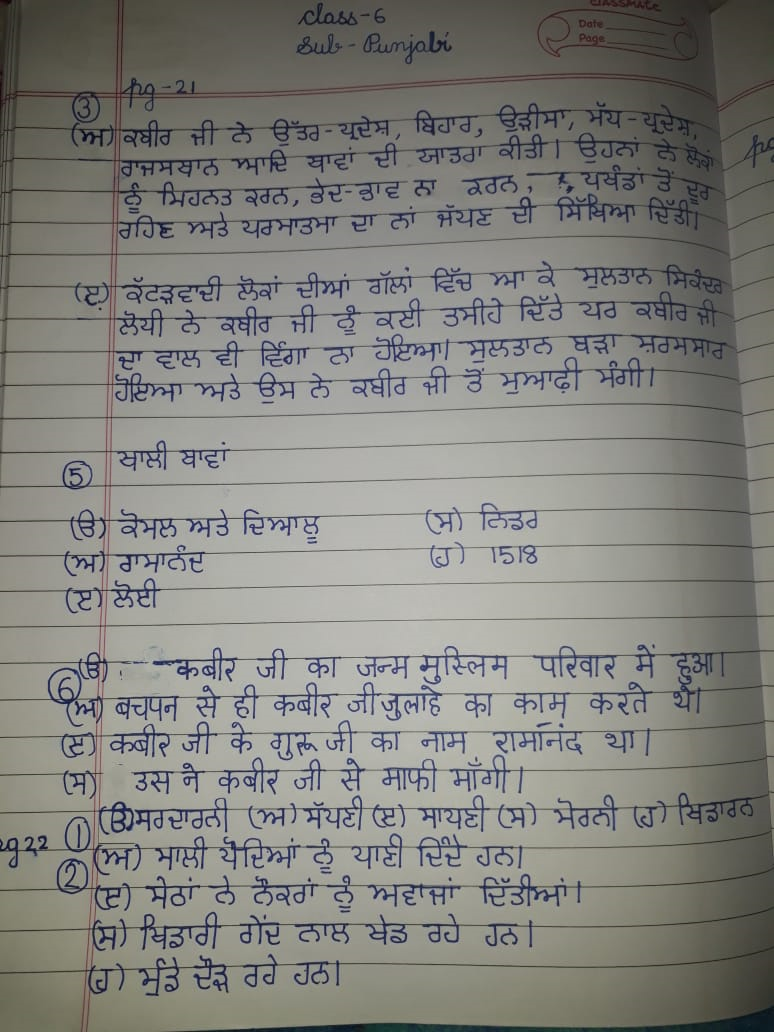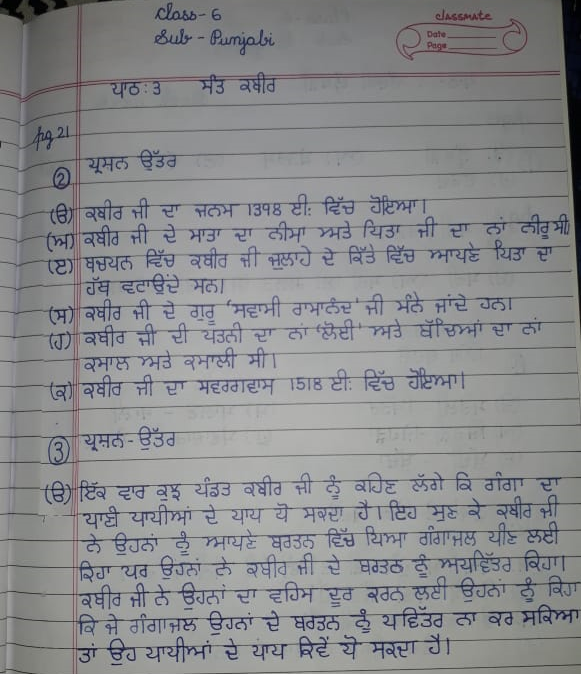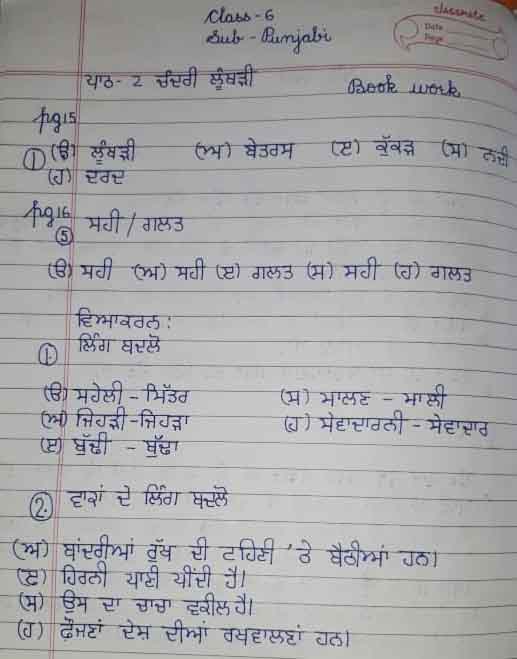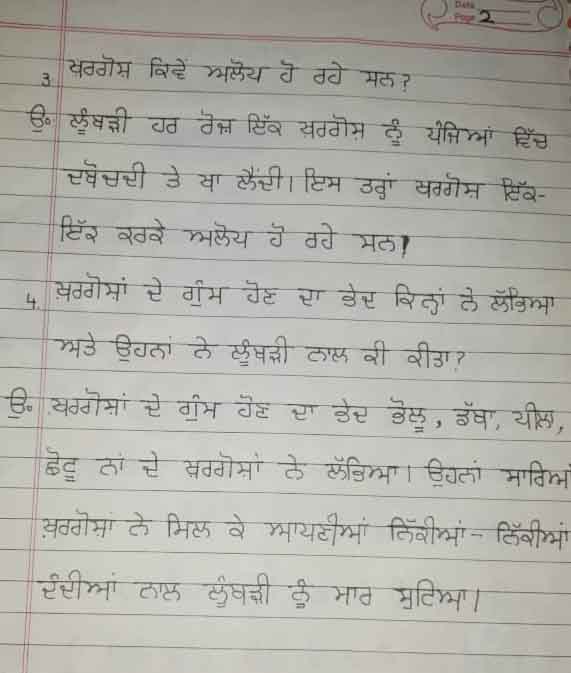|
||
|
||
|
||
| NOTICE BOARD | ||
|
CLass 6 HISTORY
CLASS 6 CHEMISTRY
Lesson 1:
Introduction to Chemistry Fill in
the blanks.
1.
Alchemists
2. Antoine Lavoisier
3. Modern Atomic Theory
4. Insecticide
5. Processed food.
6. Penicillin, Ampicillin
Identify the error. Underline the incorrect word and write the correct
statement.
1.
Chemical science
( Physical Science)
2.
Seventeenth century
(eighteenth century)
3.
Proton
( electron)
4.
Insecticides,
(fertilisers)
5.
Combination(
transformation)
6.
Paracetamol
( penicillin) Choose
the correct option.
1.
Physical
2. Gold
3. Antoine Lavoisier 4. Ammonium phosphate 5.
All of these 6. Nylon Match
the following.
1.
C
2. E
3. A
4. F
5. B
6. D Give
reasons
1.
Science is the system of acquiring
knowledge using observation and experimentation to describe and explain
various natural processes around us. The application of science has improved
our life greatly. New discoveries and inventions made our life comfortable.
In that sense science is both a body of knowledge as well as a continuous
ongoing process.
2.
The human activities
performed in everyday life directly or indirectly depend on the applications
of chemistry. Chemical processes take place to produce numerous useful
substances. Chemistry helps us to understand ourselves as well as our
environment. Food, clothing, shelter, medicines, hygiene, fertilisers, drugs
and many more are gifts of chemistry. So chemistry plays a vital role in all
aspects of life.
3.
Alchemists’ work contributed
in laying the foundation for modern chemistry and medicines. Major concerns
that form a part of modern science such as experimentation based on the
scientific method, search of new elements and compounds and their
applications in developing medicines were first addressed by alchemists.
So Alchemy is considered important as
it made a significant contribution in the evolution of modern science.
4.
All cosmetics are made from
combinations of various chemical ingredients. For example, lipsticks are
made from a combination of oils, waxes, pigments or colours, and skin
softeners. Hence the application of chemistry helps in the production of a
number of cosmetic products. Answer in short
1.
Alchemy aimed at finding ‘
philosopher’s stone ‘ which was considered a mythical and magical substance.
It was believed that this substance would turn into gold on heating with a
base of iron and copper.
2.
Mendeleev was the first
scientist who formulated the ‘ Modern Periodic Table of elements’. He used
this table to predict the existence and properties of new chemical elements.
3.
What is the use of
fertilisers? Give examples. Fertilisers are chemicals which provide nutrients required by
crops for a proper growth. The use of fertilisers increases the yield. Ex :
urea , sodium nitrate, potassium and ammonium phosphate.
4.
Sugar and salt are often
used as preservatives because they help in preventing the growth of bacteria
in food items.
5.
The raw materials are
processed by physical or chemical methods into marketable food products.
These food products are suitable for consumption, cooking or storage and are
called processed food. Preservatives, vitamins and minerals are added to
this for increasing their shell life and nutritional value. Ex: cheese,
bread, jam, jelly, butter, snacks, soft drink, tinned food, meat products,
yogurt etc.
6.
Cosmetics or beauty products
are substances that enhance the appearance of external parts of human body.
These cosmetics are used to cleanse, beautify or promote attractiveness
without affecting the body’s structure or functions. Ex: skin cleansers,
lotion, moisturisers, lipsticks, talcum powder, foundation, shampoo,
hairstyling products, deodorants, perfume etc. Explain
the following terms.
1.
Chemistry : Chemistry is a
branch of physical science that deals with the study of composition and
properties of substances and how they react when combined with one another.
It helps us understand the world in a better way and answer questions how
things work.
2.
Alchemists : Alchemists were
people who practised alchemy. These people were regarded as early chemists.
Their work contributed in laying the foundation for modern chemistry and
medicines and in the advancement of civilization.
3.
Preservatives : Chemicals
used to preserve food and control the wastage of food are called
preservatives. Ex: sodium benzoate, salt, sugar, vinegar, sorbic acid etc.
4.
Food processing: The process
of transforming raw food materials by physical or chemical method into
marketable food products is called food processing.
Differentiate between the following.
1.
Science is the system of
acquiring knowledge using observation and experimentation to describe and
explain various natural processes around us. It is both a body of knowledge
as well as a continuous process. Chemistry is a branch of physical science that deals with the study of
composition and properties of substances, and how they react when combined
with one another. It helps us understand the world in a better way.
2.
Insecticides are chemicals used to
kill insects that affect the growth of crops. Ex: benzene hexachloride, DDT
, carbaryl etc. Pesticides are used by farmers to kill pests affecting crop production and
growth of fruits. Ex: aldrin, malathion, parathion etc.
3.
Preservatives are chemicals
used to preserve food and control its wastage. Ex : sodium benzoate, sugar,
salt, vinegar etc. Processed foods are food products suitable for consumption, cooking or
storage which are made by transforming raw materials by physical or chemical
method into marketable food products.
4.
Natural fibres are fibres
which we get from nature directly and are used to produce various types of
clothes. Ex: cotton, jute, wool and silk. Synthetic fibres are artificial fibres which are also used to manufacture
clothes. These fibres are strong, wrinkle resistant and they dry quickly.
Ex: nylon, terylene etc. Answer
in detail.
1.
Alchemy was an early
philosophical and spiritual field of study that integrated chemistry with
metalwork. Alchemy was scientific as well as spiritual. People who practised
alchemy were known as alchemists. Their
work contributed in laying the foundation for modern chemistry and medicine
and in the advancement of civilization. Alchemy aimed at finding ‘
philosopher’s stone ‘ which was considered a mythical and magical substance.
It was believed that this substance would turn into gold on heating with a
base of iron and copper. Alchemists performed various experiments with
different metals and developed the processes
for the extraction of metals and alloys. Alchemy played a vital role
in the development of chemistry.
2.
Antoine Lavoisier is
considered as the father of modern chemistry. He had discovered the role of
oxygen in combustion. He also gave the law of conservation of mass which
states that mass is neither created nor destroyed in a chemical reaction. He
also named oxygen and hydrogen. Dmitri Mendeleev was the first scientist who formulated the modern table
of elements. He used the table
to predict the existence and properties of new chemical elements.
3.
Increase in population has
led to increased demand for food .Development and application of new
techniques has increased crop yield and provided ways to produce disease
free crop. Following are the various applications of chemistry in the field
of food and agriculture.
a.
Use of fertilisers increases the
yield.
b.
Use of pesticides helps to
kill the pests which affect the crop growth and production.
c.
Use of insecticides helps to
kill insects hence increase the crop production.
d.
Fungicides also help to
protect the crop from fungi.
e.
Various chemicals are used
to preserve food and control its wastage.
f.
Different chemical methods
are used in the field of food processing.
4.
Cosmetics are used to
cleanse, beautify or promote attractiveness without affecting the body’s
structure or functions. Chemistry plays a significant role in the
development of cosmetics. All the cosmetics are made from combinations of
various chemical ingredients. For example lipsticks are made from a
combination of oils, waxes, pigments or colours and skin softeners called
emollients.
5.
The knowledge of chemistry
has helped us in discovering a vast range of new medicines. Drug discovery
and development is driven by the knowledge of chemistry of various molecules
and how they are associated with life processes. Advancement in healthcare
has increased the average life expectancy of human beings. Therefore we can
say that chemistry plays the most significant role in the development of
drugs and pharmaceutical industry.
6.
Chemistry has contributed to
the development of different industries. This led to the production of many
useful materials such as plastics, alloys, synthetic rubber, synthetic
fibres and textiles. Chemicals are used to make different products, which
are required in our daily life, in various industries. The chemical industry
is the most important industry. It produces a huge variety of products that
are used by other industries.
CLASS VI
CLASS VI
Lesson
3: Kali wants to dance Answers
of crossword Down:
1. Ballet; 2. Kathak; 3. Salsa; 5. Odissi Across: 2. Kathakali; 4. Flamenco;
6. Tango; 7. Kuchipudi Answers
of in – text questions.
1.
Are you able to understand
Kali’s situation here? Why or
why not? Yes, we are able to understand Kali’s situation here because
it is clear from the passage that Kali was confused to take a decision about
his career.
2.
How did Kali’s story make
you feel? We are inspired by Kali’s story.
3.
Comprehension
1.
Full Name: Kali
Veerapathiran
2.
Age: 25
3.
Place of birth: Kovalam,
Kerala
4.
Qualification: PG Diploma in Dance
5.
Profession: Professional Dancer
6.
Specialization:
Bharatanatyam and three ancient Tamil folk dance forms
7.
Achievements: The only male
dancer to master Bharatanatyam, as well as three ancient Tamil folk dance
forms 2. a. False; b. True; c. True; d. False; e. False Reflect and answer
3.
In the struggling fishing
village of Kovalam..........fought off villains. What do these lines tell us about the people who are usually
considered heroes in India? Is this a good definition of a hero? In India, people consider someone a hero when he/she fights
bad people and defeats them. This is very similar to what happens in the
movies. No, I don’t think this is a good definition of a hero.
4.
Who has ever learnt dance
and made ..........his friends tease him. What do these lines tell us about people’s opinions of
different professions? What do you think we can do to change these views? These lines tell us that people have a fixed set of
professions they consider respectable. If someone does anything besides
these jobs, he/she is not given any respect. It can be changed by educating
people about such professions and their benefits.
5.
Amma asks Kali what his
heart wants. ......................for me , Amma, he replies. What does this conversation tell us about Amma’s nature? What
do we know about Kali’s relationship with her? This conversation tells us that Amma has a kind, simple and
accepting nature. It shows that Kali has a very nice and loving relationship
with his mother as they both care for each other and simply want the other
person to be happy.
6.
How did Kali evolve , both
as a dancer and as a person, through the journey described in the lesson? Each time Kali thought
of giving up dancing, Amma was there to reminds him that dancing made him
the happiest. Kali evolved as a dancer due to his hard work. He soon becomes
the only male dancer to master Bharatanatyam, as well as three ancient Tamil
folk dance forms.
7.
A boy in your class loves to
sew. The other students in the class tease him, including some of your
closest friends. What do you do? I will encourage
him to keep doing it. I will also tell my classmates to not make fun of him
and let him do what he likes to do.
Work with Words (Page 43) 1.
a. lose; b. council; c. accept; d. effect;
e. dessert; f. principal, advice 2. a.
their; b. There; c. They’re; d. their; e. there
CLASS VI
Lesson2:
Dear Mrs Naidu
Comprehension (Page 26) 1. a.
i; b. iii; c. i
2. Why does Sarojini say that she
would not have been able to fight against the Britishers?
Sarojini says that she would not have been able to fight against the
Britishers because they had a lot of spies and detectives. 3. Why
had Sarojini Naidu locked herself in a room for a whole day?
Sarojini Naidu locked herself in a room for a whole day because her parents
wanted her to speak English instead of Bengali but she disagreed wither
parents.
Reference to context 4.
Who is ‘she ’ in these lines?
Sarojini’s new teacher, Annie Miss
is ‘she’ in these lines. b. Does
Sarojini seem to agree with the opinion that memorizing things makes you a
parrot? No,
Sarojini doesn’t seem to agree with the opinion. c. What
do you understand by growing one’s heart? Growing
one’s heart means being compassionate and nice to others. 5. a.
Who is writing these lines? Whom are the lines addressed to?
Sarojini is writing these lines. The lines are addressed to Sarojini Naidu. b. What
is the writer referring to when she says ‘that was rude’? By
saying ‘that was rude’, the
writer means it is rude to call someone being dead. c. What
can you say about the writer based on the way she has rewritten her words? Based
on the way she has rewritten her words I can say that the writer is
innocent, respectful and extremely curious. 6. a.
Which story is being referred to here? The
story of a young Sarojini Naidu locking herself in a room because she
disagreed with her parents is being referred to here. b.
What can we understand about
Sarojini’s life at home from this sentence? From
this sentence, we understand that Sarojini’s life at home was limited to one
room where she stayed with her mother. Reflect
and write
7.
What have you learnt about Sarojini’s view of adults?
Sarojini thinks of adults as people who do not like being asked questions.
8. after reading the lesson, would
you say that Sarojini and Mrs Naidu might have more in common than just
their names? Why or why not? No, I
do not think that Sarojini and Mrs Naidu had anything in common except their
names. I think so because Mrs Naidu used to fight for things she considered
right and had a very comfortable life while growing up. She was also
well-read and exceptionally talented.
9. a. Yes; b. No; c. Yes; d. No;
e. Do you agree that Mrs Naidu’s
actions were brave? Is there a way to talk about certain issues in a calm
manner to bridge this gap? No, I
do not agree that Mrs Naidu’s actions were brave.
Yes, there are ways to talk to others and solve problems in a calm
manner.
Work with Words
(Page 28) 1.
useless conclude confused detective common freedom strangers
childhood assignment memorize disagree introduce 2.
a. street; b. Celsius;
c. Bachelor of Arts; d.
as soon as possible; e. estimated
time of arrival 3. a.
e.g.; b. kgs;
c. Dr;
d. Fri, 25 Jan; e.
PM
CLASS VI : COMPUTER APPLICATIONS
Chapter 1 : Computer story
Note: Read lesson very carefully many times and solve : Activity, Multiple
choice questions, True / False, Fill in the blanks and all abbreviations.
Answer the following
1.
Name the components used in every generation of computers.
First Generation (1940 – 1956)
- Vacuum Tube
Second Generation (1957 – 1963)
- Transistors
Third Generation (1964 – 1971)
- Integrated Circuits
Fourth Generation (1972 –
present)
- Micro-processor
Fifth Generation (present & beyond)
- Artificial Intelligence
2.
Write a note on microcomputers.
Microcomputers are also called personal computers (PCs).
These are small low cost computers whose CPU is a microprocessor
integrated on a single circuit chip.
Desktop computers, Laptop computers, Palm top computers, Tablet PCs,
High end mobile phones etc. are examples of microcomputers.
3.
What is a workstation?
A
workstation
is a computer dedicated to a user or group of users engaged in business or
professional work. It includes one or more high resolution displays ( for
CAD / CAM) and a faster processor than a personal computer. A
workstation
also has greater multitasking capability because of additional random access
memory, drives and drive capacity.
(Note: CAD – Computer Aided Design,
CAM – Computer Aided Manufacturing.
In medical term CAD
stands for
Coronary Artery Disease)
4.
For what purpose are supercomputers used?
Supercomputers are used for calculation-intensive tasks such as weather
forecasting, climate research, physical simulations, nuclear energy
research, missile development, petroleum exploration
etc.
5.
What is parallel processing?
Parallel processing refers to the simultaneous use of more than one CPU to
execute a complicated program.
In parallel processing the entire program is divided into different modules
and executed by different CPUs simultaneously.
6.
Which operations are common for all types of computers? Explain with a
diagram.
Input – process – output, is
the basic working principle of all types of computers.
7.
Which is the unit in a computer that performs calculations and decision
making?
ALU (Arithmetic Logic Unit) performs all the arithmetic operations and logic
operations in a computer system.
It is one of the main units of CPU and is housed in the
Microprocessor chip.
8.
What is the function of control unit ?
The control unit maintains order within the computer system and directs the
flow of data. It selects one
program statement from the storage area, interprets it and sends to the ALU
and storage unit after execution.
1.
Write a note on Computer memory
Computer memory is the storage
space in the computer, where data is to be processed and instructions
required for processing are stored. The memory is divided into large number
of small parts called cells. Each location or cell has a unique address,
which varies from zero to memory size minus one.
2.
What do you
mean by output unit?
The output unit accepts the
results and messages produced by the computer, decode it into human readable
form and display, print or store as directed.
Monitor, printer, plotter, storage drives etc. are examples of output
devices.
3.
What are the
classification of computers based on size and speed?
Based on size and speed computers
are classified into four. Micro
Computers, Mini Computers,
Mainframe Computers and Super Computers.
4.
Write a note
on Mini Computers
Mini Computers are the
intermediate computers between Micro and Mainframe Computers.
Now a days these are referred to as mid-range servers.
It is a multiprocessing system capable of supporting upto 250 user
terminals simultaneously.
5.
In what and
when Ms. Shakuntla Devi did defeat a computer?
The Math Wizard Ms. Shakuntla Devi
defeated a computer by 10
minutes in the calculation of 23rd root of a 201 digit number.
She did it in 50 seconds in 1977.
6.
What is
multiprocessing?
Multiprocessing is the use of two or more
central processing units (CPUs) within a single computer system. The term
also refers to the ability of a system to support more than one processor or
the ability to allocate tasks between them.
7.
What is parallel processing?
Parallel processing is a type of computation in which many calculations or
the execution of processes are carried out simultaneously. Large problems
can often be divided into smaller ones, which can then be solved at the same
time.
8.
What is VLSI?
VLSI stands for Very Large Scale Integration which means integration of
thousands of transistors into a single chip.
VLSI began in the 1970s
when complex semiconductor and communication technologies were being
developed. The microprocessor is a VLSI
device.
9.
Name some First Generation Computers.
UNIVAC, ENIAC, IBM-701, IBM-650 are some of the First Generation Computers.
10.
Name some
Second Generation computers.
IBM 7090, IBM 7094, UNIVAC 1108
11.
IBM 370
belongs to which generation?
IBM 370 belongs to Third
Generation Computers.
12.
Name the
first Indian Super Computer.
Who built it?
PARAM is the first Indian Super
Computer. It was developed by
C-DAC (Centre for Development of Advanced Computing)
13.
Full-Forms
(a)
UNIVAC
Universal Automatic Computer
(b)
ENIAC
Electronic Numerical Integrator and Computer
(c)
IBM
International Business Machines
(d)
IC
Integrated Circuit
(e)
VLSI
Very Large Scale Integrated Circuit
(f)
VVLSI
Very Very Large Scale Integrated Circuit
(g)
CAD
Computer Aided Design
(h)
CAM
Computer Aided Manufacturing
(i)
CAL
Computer Aided Learning
(j)
CU
Control Unit
(k)
ALU
Arithmetic Logic Unit
(l)
MU
Memory Unit
(m)
C-DAC
Centre for Development of Advanced Computing.
(n)
CPU
Central Processing Unit
CLASS VI Lesson 1: Why I don’t wear earrings Comprehension: Q 2: Why did Malala like to play with her plastic mobile
phone? Malala’s father was
always talking on his mobile, and she loved to copy him and pretend to make
calls on hers. So she liked to play with her plastic mobile phone. Q 3: Why is Malala’s mother ‘unmoved’ by her explanation for
stealing from Safina? Malala’s mother is
unmoved by her explanation for stealing from Safina because she believed
that Malala should have set an example by not doing the same and teaching
Safina a lesson in a better way. Reference to context Soon it became a compulsion. I did not know how to stop.
a.
Who is ‘I’ in these lines? ‘I’ in
these lines is Malala. b. What became a compulsion for the speaker? Why?
Stealing things from Safina’s house became a compulsion for
the speaker because it gave her a thrill. c. Which incident finally made her stop? When Malala’s
mother found all the stolen things in her cupboard, Malala stopped stealing. ‘They knew you were stealing,’ she said. ‘They were waiting
for you to come clean but you just kept on.’ a. Who is ‘she’ in the first paragraph? Who is ’I’ in the
second paragraph? Malala’s cousin Reena
is ‘she’ in the first paragraph. ‘I ‘ in the second paragraph is Malala. b. What does it mean to
have a sinking feeling? To have a sinking feeling means to feel uneasy. c.What does the phrase ‘to come clean’ mean? To come clean means to
keep nothing hidden. Reflect and answer 1. What is the
importance of Malala’s father in her life? Point to the parts of lesson
which make you say that? Malala looked up
to her father. She wanted him to be proud of her. He also knew how to make
her feel guilty for her mistakes so she wouldn’t repeat them. The part where
he went and bought the whole lot of almonds from a cart owner and put them
in glass dish makes me say that. 2. List the
characteristics of a memoir, based on Malala’s style of writing? The following are some characteristics of a memoir based on
Malala’s writing: • It shows the
relationship between the writer and other people. • It includes stories
from past with great details and the feelings at the time of the incident. • It always uses
first-person narrative. •
It usually teaches the reader some important values about life. 3. I think everyone
makes a mistake at least once in their life..... Do you agree
with this statement? Support your
answer with example. Yes, I agree with this statement.
Once I went to my friend’s house for
a party without informing my parents.
My parents thought that I would have been studying in my room.
When they could not find me anywhere in the house, they got panicked.
All the members of my family and neighbours formed into different
search teams and in the mean time somebody informed the Police too. When I
returned, I understood the seriousness of my mistake of going out without
telling anybody.
Study Materials |
||
|
||
ST.ALPHONSA CONVENT SCHOOL, ABOHAR Near Jaishree Estate, 1.5 k.m from Sito Bye-Pass Junction,
Sito Road,Abohar, Punjab, Mob: +91- 9417330333, +91- 9988077057 mail : sacsahohar@gmail.com , jijoe@ymail.com |
||
| You are the |








